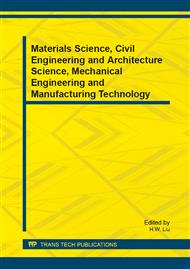p.795
p.799
p.803
p.809
p.813
p.817
p.821
p.827
p.834
Wind Tunnel Test Study of Estimation Method on Peak Wind Pressure of Low-Rise Buildings
Abstract:
In response to the estimation of the peak values of wind pressure on the maintenance structure, the results with TTU low-rise building standard model of different methods are analyzed and compared. The results show: the results of peak-to-average method and Cook & Mayne method are very close for the long sample estimation of the peak values of wind pressure, the former is the most ideal method for estimation of extreme wind pressure; For short sample estimation, the peak-to-average method fails because the sampling is not long enough, but the Cook & Mayne method can estimate accurate peak value of wind pressure by the short sample (the corresponding prototype time not less than 600s); The peak factor method based on the assumption of normal distribution is not applicable to low-rise building and the results are relatively dangerous.
Info:
Periodical:
Pages:
813-816
Citation:
Online since:
January 2014
Authors:
Price:
Сopyright:
© 2014 Trans Tech Publications Ltd. All Rights Reserved
Share:
Citation:


